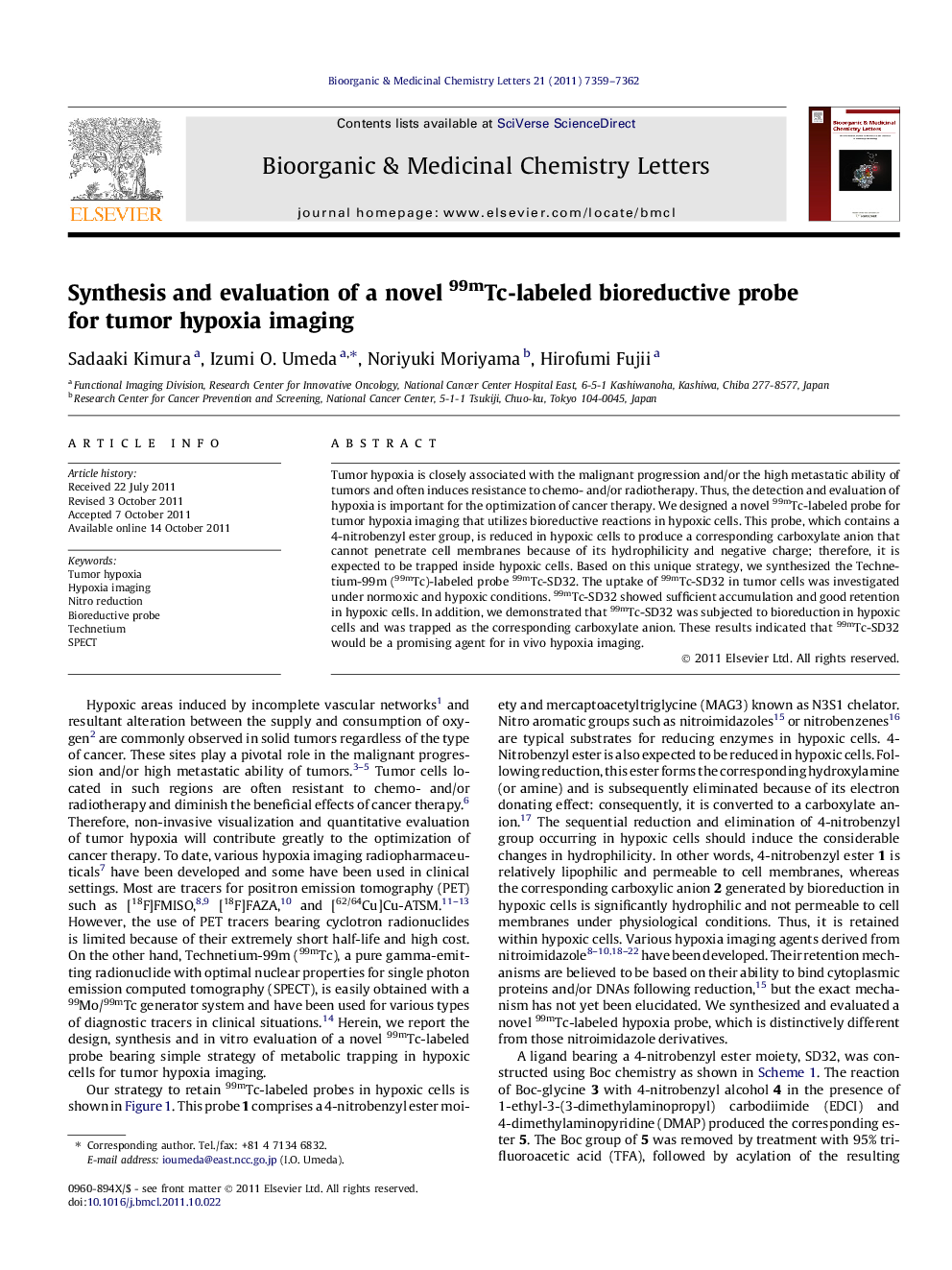| Article ID | Journal | Published Year | Pages | File Type |
|---|---|---|---|---|
| 1370148 | Bioorganic & Medicinal Chemistry Letters | 2011 | 4 Pages |
Tumor hypoxia is closely associated with the malignant progression and/or the high metastatic ability of tumors and often induces resistance to chemo- and/or radiotherapy. Thus, the detection and evaluation of hypoxia is important for the optimization of cancer therapy. We designed a novel 99mTc-labeled probe for tumor hypoxia imaging that utilizes bioreductive reactions in hypoxic cells. This probe, which contains a 4-nitrobenzyl ester group, is reduced in hypoxic cells to produce a corresponding carboxylate anion that cannot penetrate cell membranes because of its hydrophilicity and negative charge; therefore, it is expected to be trapped inside hypoxic cells. Based on this unique strategy, we synthesized the Technetium-99m (99mTc)-labeled probe 99mTc-SD32. The uptake of 99mTc-SD32 in tumor cells was investigated under normoxic and hypoxic conditions. 99mTc-SD32 showed sufficient accumulation and good retention in hypoxic cells. In addition, we demonstrated that 99mTc-SD32 was subjected to bioreduction in hypoxic cells and was trapped as the corresponding carboxylate anion. These results indicated that 99mTc-SD32 would be a promising agent for in vivo hypoxia imaging.
Graphical abstractFigure optionsDownload full-size imageDownload as PowerPoint slide
